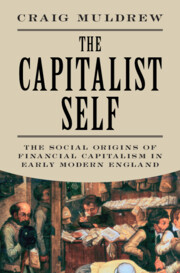Refine search
Actions for selected content:
1498 results
8 - Governance of Lawyering and Lawyering Governance of AI
- from Part III - Technology’s Disruptive Effects on Law
-
-
- Book:
- The Cambridge Handbook of the Governance of Technology
- Published online:
- 30 October 2025
- Print publication:
- 13 November 2025, pp 123-150
-
- Chapter
- Export citation
Oncofertility in Prepubertal Girls: A Qualitative Study of Canadian and French Pediatric Oncologists’ Perspectives on Ovarian Tissue Cryopreservation
-
- Journal:
- Journal of Law, Medicine & Ethics ,
- Published online by Cambridge University Press:
- 06 November 2025, pp. 1-8
-
- Article
-
- You have access
- Open access
- HTML
- Export citation
5 - The Ruling Class
-
- Book:
- Politics as Exchange
- Published online:
- 23 October 2025
- Print publication:
- 06 November 2025, pp 71-86
-
- Chapter
- Export citation

Cultural Property
- Law, Policy, and Markets
-
- Published online:
- 05 November 2025
- Print publication:
- 30 October 2025
Decentred dereliction in digital international relations: PeaceTech, ethics, and the cascading of moral responsibility
-
- Journal:
- Review of International Studies , First View
- Published online by Cambridge University Press:
- 04 November 2025, pp. 1-23
-
- Article
-
- You have access
- Open access
- HTML
- Export citation

Kant and Environmental Philosophy
- The Climate Crisis and the Imperative of Sustainability
-
- Published online:
- 01 November 2025
- Print publication:
- 20 November 2025
Chapter 4 - Ethics and the Everyday
-
- Book:
- Letterworlds in Late Nineteenth-Century France
- Published online:
- 16 October 2025
- Print publication:
- 30 October 2025, pp 192-241
-
- Chapter
- Export citation
Introduction
-
- Book:
- Letterworlds in Late Nineteenth-Century France
- Published online:
- 16 October 2025
- Print publication:
- 30 October 2025, pp 1-25
-
- Chapter
- Export citation
1 - Introduction
-
- Book:
- Can the Public be Trusted?
- Published online:
- 11 October 2025
- Print publication:
- 30 October 2025, pp 1-30
-
- Chapter
-
- You have access
- Open access
- HTML
- Export citation
5 - An Ethical Fulcrum: From Participation in the Body of Christ to the Happy Self
-
- Book:
- The Capitalist Self
- Published online:
- 12 October 2025
- Print publication:
- 30 October 2025, pp 197-225
-
- Chapter
- Export citation
Handling the hype: Demystifying artificial intelligence for memory studies
- Part of
-
- Journal:
- Memory, Mind & Media / Volume 4 / 2025
- Published online by Cambridge University Press:
- 27 October 2025, e18
-
- Article
-
- You have access
- Open access
- HTML
- Export citation
Madhouse: A Tragic Tale of Megalomania and Modern Medicine, by Andrew Scull
- Part of
-
- Journal:
- BJPsych Advances , FirstView
- Published online by Cambridge University Press:
- 23 October 2025, pp. 1-3
-
- Article
- Export citation
“Who are you going to call?:” Research ethics consultation directors’ perspectives on barriers and facilitators
-
- Journal:
- Journal of Clinical and Translational Science / Volume 9 / Issue 1 / 2025
- Published online by Cambridge University Press:
- 21 October 2025, e248
-
- Article
-
- You have access
- Open access
- HTML
- Export citation

The Capitalist Self
- The Social Origins of Financial Capitalism in Early Modern England
-
- Published online:
- 12 October 2025
- Print publication:
- 30 October 2025
1 - Usefulness, Loyalty, and Property
-
- Book:
- God, Slavery, and Early Christianity
- Published online:
- 19 September 2025
- Print publication:
- 09 October 2025, pp 48-90
-
- Chapter
- Export citation
5 - Instrumental Agency and Ecclesiastical Unity
-
- Book:
- God, Slavery, and Early Christianity
- Published online:
- 19 September 2025
- Print publication:
- 09 October 2025, pp 200-256
-
- Chapter
- Export citation
Chapter 4 - The Court of Justice and the Court of Conscience
-
-
- Book:
- British Law and Literature in the Long Eighteenth Century
- Published online:
- 19 September 2025
- Print publication:
- 09 October 2025, pp 83-102
-
- Chapter
- Export citation
Conclusion
-
- Book:
- God, Slavery, and Early Christianity
- Published online:
- 19 September 2025
- Print publication:
- 09 October 2025, pp 257-270
-
- Chapter
- Export citation
Calling a trade-off a trade-off in arguments for cat confinement
- Part of
-
- Journal:
- Animal Welfare / Volume 34 / 2025
- Published online by Cambridge University Press:
- 08 October 2025, e65
-
- Article
-
- You have access
- Open access
- HTML
- Export citation
Ethical issues with psychedelic-assisted treatments in psychiatry: A systematic scoping review
-
- Journal:
- Psychological Medicine / Volume 55 / 2025
- Published online by Cambridge University Press:
- 29 September 2025, e284
-
- Article
-
- You have access
- Open access
- HTML
- Export citation
